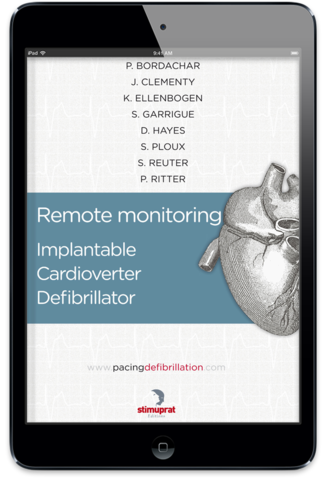The indications for the implantation of an automatic defibrillator (ICD) have considerably evolved in the past 20 years. Initially limited to secondary prevention, for patients who had a history of aborted sudden cardiac death or sustained ventricular tachycardia, defibrillators are now implanted for primary prevention in patients at risk of sudden death though without history of sustained tachyarrhythmias. The variety of ICD recipients is wide, including young patients presenting with channelopathies in absence of structural heart disease and older patients with advanced cardiomyopathies, sedentary patients with limited mobility and active patients with professional obligations preventing their attendance to scheduled follow-ups, symptomatic patient who need regular follow-ups to limit their risk of cardiac decompensation, and asymptomatic patients who can be followed at more widely spaced intervals. One must distinguish the surveillance of the patient and heart disease, usually by the cardiologist or primary physician, from the surveillance of the ICD, usually assumed by an arrhythmia service because of the complexity of the task. ICD recipients require special surveillance because of their risk of experiencing asymptomatic cardiac events as well technical failures of the device. State-of-the-art ICDs are capable of memorising a growing amount of diagnostic information pertaining to their function, to the occurrence of ventricular or supraventricular arrhythmias, and to the patient’s health status and cardiac function. The regular, or even continuous monitoring of the devices’ memories might enable the early detection of their dysfunction and prevent episodes of cardiac decompensation.

Implantable Cardiac Defibrillator
Authors: Pr Bordachar, Dr Ellenbogen, Dr Eschalier, Dr Garrigue, Dr Hayes, Dr Le Polain, Dr Reuter, Dr Ritter
Format: Ebook
0,00 €



